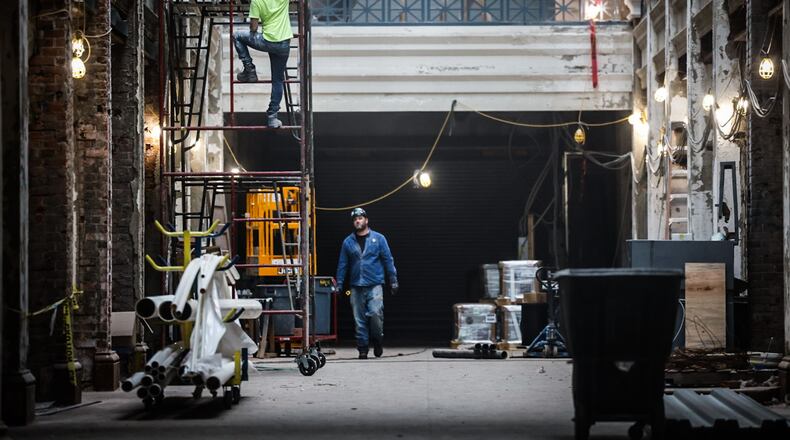The local job market is sizzling, and regional leaders say there’s plenty more jobs on the way, especially in coming years, due to large planned investments by Joby Aviation, Sierra Nevada Corp., Honda Motor Co. and other companies.
“There’s something special going on in Dayton and in Ohio,” said Jeff Hoagland, president and CEO of the Dayton Development Coalition. “We’ve been saying that for a while, but I think the numbers are proving those statements to be true.”
Employers in the Dayton metro area generated 1,600 new jobs in August, which was a 0.4% increase in local payrolls, according to preliminary, seasonally adjusted data from the U.S. Bureau of Labor Statistics.
Local employment has increased for six consecutive months, a solid streak that’s only been matched or beaten a handful of times in the last three decades.
The Dayton metro area consists of Montgomery, Greene and Miami counties.
Through August, the metro area has only lost jobs in one month this year (-1,200 in February), and the local economy already has netted 8,400 jobs, according to preliminary data that could see revision.
Credit: Jim Noelker
Credit: Jim Noelker
This is the most local jobs netted before September in any year since at least 1990, which is as far back as the Bureau of Labor Statistic’s records go.
The Dayton region added 4,600 net jobs in the first eight months of 2022 and 4,300 during the same stretch in 2021.
The only year that comes even close is 1994, when the metro area saw a 7,400 net job gain through August.
Last month, this newspaper reported that the Dayton region in July finally recouped all of the jobs it lost during the first months of COVID, when there was a massive and unprecedented employment decline.
The region lost nearly 70,000 jobs in March and April of 2020.
Last month, about 395,300 workers were employed in the three-county area, which was the highest payroll level since December of 2006.
Hoagland, with the Dayton Development Coalition, says economic development work takes time, and plans that were developed a decade or longer ago are now paying off.
The local economy and job market were awful in the late 2000s and early 2010s, Hoagland said, with the region losing major employers including GM, Delphi and NCR.
Despite these losses, Wright-Patterson Air Force Base saw major job gains from the Base Realignment and Closure process (BRAC).
Wright-Patt, once home to 19,000 employees, now has an estimated 35,000 employees, according to local leaders, and the base also is believed to support tens of thousands of jobs indirectly.
The Dayton region has seen significant growth in advanced manufacturing, aerospace, health care, IT and logistics and distribution, Hoagland said.
Hoagland said economic development is a “team sport” and it has taken a lot of behind-the-scenes work by local and state leaders to make these projects a reality.
Sierra Nevada Corp., a private defense and aviation-focused company, earlier this year opened a new aircraft maintenance and overhaul facility that will employ about 150 people.
Sierra Nevada is building another hangar facility and plans to construct additional ones after that.
Last month, Amazon opened a massive new fulfillment center in Union in Montgomery County that eventually will employ about 2,000 people.
Honda and LG Energy Solution are building an electric vehicle battery plant in Fayette County, east of Dayton and Xenia, that will employ about 2,200 workers.
Joby Aviation this month announced plans to build and open a new aircraft manufacturing facility near the Dayton International Airport that will employ up to 2,000 workers. Some call the aircraft “flying cars.”
In addition to creating direct jobs at these facilities, these projects also are supporting a large number of construction jobs and other jobs will be created by employers that feed the supply chain.
Hoagland said he believes the strong local job growth could continue.
He said the workforce is starting to “hit the ceiling” with how many people are available to fill local job openings.
Shannon Joyce Neal, vice president of strategic communications with the coalition, said local investments by major and innovative employers will attract job-seekers from all over.
“We’re really hoping we’re creating this nexus of opportunities for competitive talent,” she said.
Credit: JIM NOELKER
Credit: JIM NOELKER
About the Author







